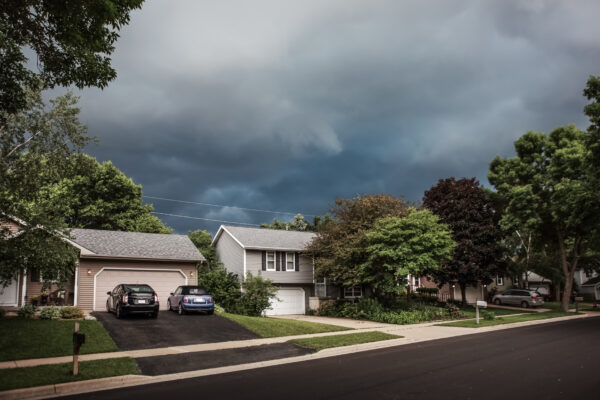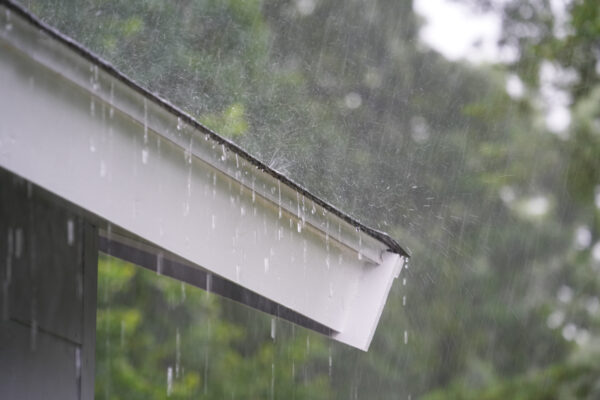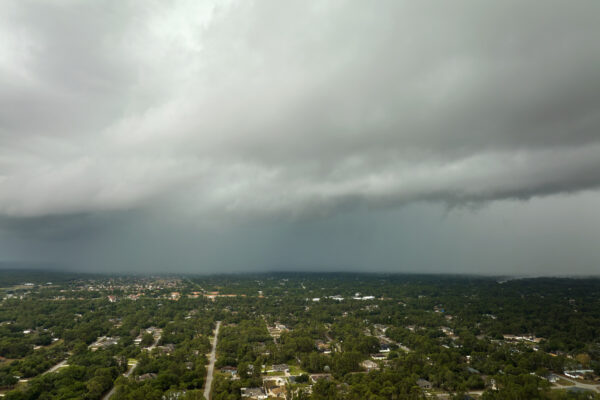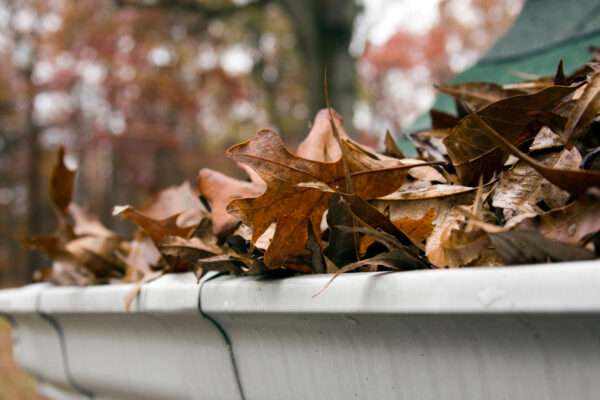
How to Prepare Your Roof for Storms
Planning and preventative maintenance go a long way for keeping your roof and home safe during storms.Preparing a roof for storms is crucial to protect your home from potential damage. Thunderstorms, snowstorms, and hurricanes can bring high winds, heavy rain, and even hail, all of which can wreak havoc on an unprepared roof. Here are some tips to help you get your roof storm-ready.
1. Inspect the Roof
Start by conducting a thorough inspection of your roof. If you’re comfortable doing so, grab a sturdy ladder and carefully climb up to take a closer look. However, if you’re not inclined to self-inspect the roof, it’s best to contact a Malarkey-certified professional roofing contractor.
Key areas to inspect:
- Shingles: Look for any shingles that are cracked, curled, loose, or missing. Shingles are the first line of defense against water, so any damage here could lead to leaks. If you spot any issues, replace the damaged shingles, or have a professional do it for you.
- Flashing: Flashing is the metal around chimneys, vents, and skylights, and added to keep water away from roof penetrations like these. Check to ensure they’re securely fastened and not rusted or cracked. If flashing is compromised, water can easily seep in around these vulnerable areas.
- Gutters and Downspouts: While technically not part of the roof itself, gutters play a significant role in directing water safely away from your home. Make sure they’re clear of debris like leaves, twigs, and dirt, which can cause blockages. Clogged gutters can lead to water pooling on the roof and saturating the ground below, increasing the risk of leaks and even water damage to the foundation of your home.
- Soffits and Fascia: These are the boards that run along the edge of the roof, protect rafters from the elements, and support the gutter system. Check them for any signs of rot, damage, or gaps that could allow water or pests to enter under the roof.

2gf. Document Your Roof’s Condition
Before the storm hits, take photos or videos of your roof’s current condition. This documentation can be invaluable if you need to file an insurance claim after the storm. It provides a clear “before” picture, making it easier to highlight any damage caused by the storm.
3. Check the Chimney and Skylights
If your home has a chimney or skylights, these can be vulnerable during a storm. Ensure the chimney is structurally sound with no loose bricks or cracks. Skylight seals should be intact and leak-free. Consider installing a chimney cap (if not already in place) to prevent rain from entering the chimney.
4. Secure Loose Objects on the Roof
If you have any added objects on the roof, like satellite dishes, antennas, or solar panels, ensure they’re securely fastened. These items can easily become airborne in strong winds, damaging your roof and whatever they land on – like cars or neighboring roofs.
5. Trim Overhanging Branches
Trees are great landscaping, but overhanging branches can be a significant hazard during a storm. High winds can cause branches to break off and slam into your roof, potentially causing serious damage. Trim back any branches that hang over your roof. As a rule, all branches should be at least six feet from your roof.

6. Check for Proper Ventilation
Proper ventilation in the attic is essential for preventing heat and moisture buildup, which can damage your roof from the inside out. Make sure vents are unobstructed and functioning correctly. Poor ventilation can cause the roof deck to warp, making your roof more susceptible to storm damage.
7. Inspect and Reinforce Roof Structure
If you live in an area prone to severe storms, consider reinforcing your roof structure. This includes adding hurricane straps or clips to secure the roof to the walls of your home. These reinforcements can be particularly helpful in preventing your roof from being blown off during a severe storm.
8. Inspect Attic Insulation
Proper attic insulation is often overlooked, yet it plays a critical role in maintaining the integrity of your roof. Inadequate insulation prevents heat from escaping your home. This problem can cause snow on the roof to melt unevenly, which leads to ice dams. During a storm, ice dams can cause water to back up under shingles and form leaks. To prevent this, ensure your attic is well-insulated.
9. Waterproofing
Waterproofing your roof adds an extra layer of protection against heavy rain. Consider adding a self-adhering waterproof membrane such as Malarkey Arctic Seal® to the roof deck before installing shingles for extra protection. Arctic Seal® is also useful as a flashing membrane,
helping protect areas susceptible to leaks such as valleys, roof-to-wall transitions, and around vents and skylights.
10. Impact-Resistant Shingles
If you’re due for a roof replacement or significant repairs, consider installing impact-resistant roofing shingles with a Class 3 or 4 impact rating. These shingles are designed to withstand the impact of hail and debris better than traditional shingles, reducing the risk of damage during a storm, and may even qualify for insurance discounts. All Malarkey field shingles are rated highly for impact resistance.
Bonus: Have Emergency Supplies on Hand
Lastly, prepare for the worst and hope for the best as they say. It’s wise to have some emergency supplies on hand, such as a tarp, nails, a hammer, and heavy-duty plastic sheeting ready just in case. If your roof does sustain damage during the storm, these supplies can help you make temporary repairs until a professional can assess and fix the damage.
In conclusion, preparing your roof for a severe storms is all about being proactive. Regular inspections, timely repairs, and taking preventative measures can make a world of difference when it comes to protecting your home. Remember, a well-maintained roof isn’t just about avoiding leaks—it’s about safeguarding your entire home from the unpredictable forces of nature. Take the time to prepare so you can weather storms with confidence.


